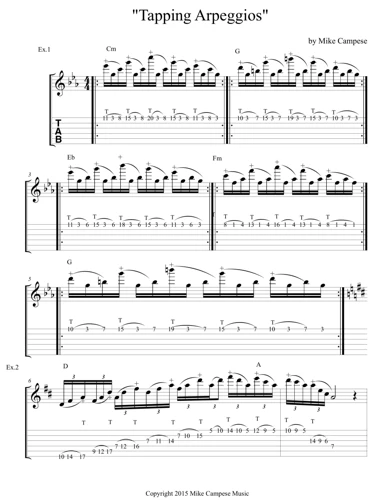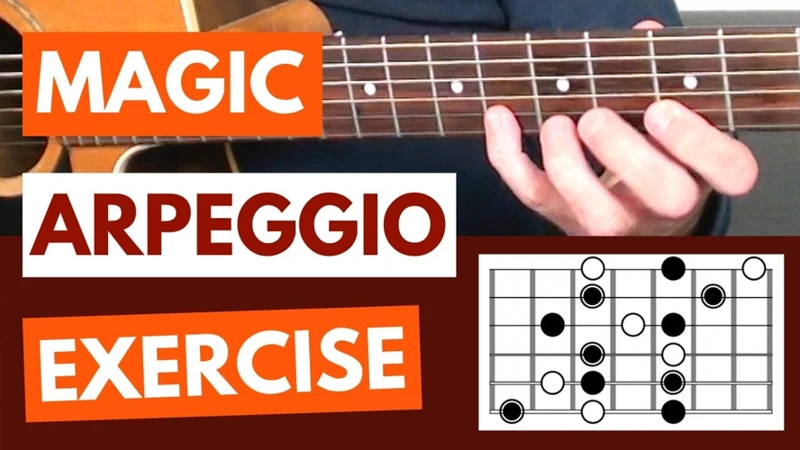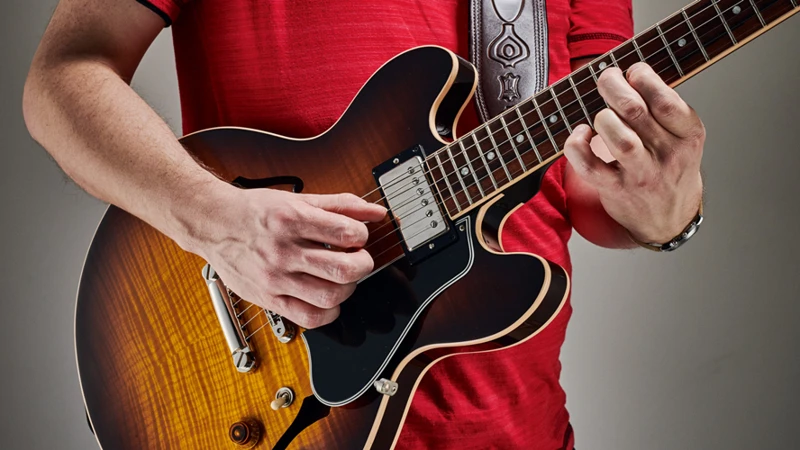Electric guitar tapped arpeggios are a technique that adds a unique and dynamic sound to a guitarist’s repertoire. This technique involves tapping on the fretboard with the picking hand to produce arpeggios, creating a cascading and intricate sound that is both impressive and melodically rich. Tapped arpeggios have been popularized by guitarists such as Eddie Van Halen, Stanley Jordan, and Steve Vai, showcasing the versatility and creativity that can be achieved with this technique.
Understanding Tapped Arpeggios
Tapped arpeggios involve using the picking hand to tap on the fretboard to sound individual notes of an arpeggio. This technique allows for quick and precise execution of arpeggios, giving the guitarist the ability to play complex patterns with ease. By tapping on the fretboard, the guitarist can create a fluid and seamless sound that is not easily achievable with traditional picking techniques.
Technique
To perform tapped arpeggios, the guitarist uses the picking hand to tap on the fretboard while the fretting hand holds down the notes of the arpeggio. This tapping motion creates a percussive effect, adding a rhythmic element to the arpeggios. By properly coordinating the movements of both hands, the guitarist can produce a clean and articulate sound that highlights the individual notes of the arpeggio.
Benefits
One of the main benefits of using tapped arpeggios is the speed and fluidity that can be achieved. Since the picking hand is directly sounding the notes by tapping on the fretboard, there is no need to pluck each string individually, allowing for faster execution of arpeggios. Additionally, the tapping motion can create a legato effect, blending the notes together smoothly for a seamless sound.
Exploring Different Arpeggio Patterns
There are countless arpeggio patterns that can be played using the tapped arpeggio technique. From simple major and minor arpeggios to more complex diminished and augmented arpeggios, the possibilities are endless. Experimenting with different patterns and combinations can lead to the creation of unique and interesting musical phrases that showcase the guitarist’s creativity.
Major Arpeggios
Major arpeggios are a fundamental building block of music theory and are commonly used in a variety of musical genres. By applying the tapped arpeggio technique to major arpeggios, guitarists can add a modern twist to this classic sound. The bright and uplifting quality of major arpeggios is enhanced by the fluid and cascading effect of tapped arpeggios, creating a dynamic and expressive sound.
Minor Arpeggios
Minor arpeggios have a more melancholic and mysterious sound compared to major arpeggios. When played using tapped arpeggios, minor arpeggios take on a haunting and ethereal quality that can evoke strong emotions in the listener. The combination of the tapping motion and the minor tonality creates a captivating and evocative sound that is both powerful and emotive.
Diminished and Augmented Arpeggios
Diminished and augmented arpeggios are more exotic and dissonant in nature, adding tension and intrigue to musical phrases. By utilizing tapped arpeggios with these advanced arpeggio patterns, guitarists can push the boundaries of traditional harmony and create bold and adventurous sounds. The unconventional nature of diminished and augmented arpeggios is accentuated by the percussive and rhythmic quality of tapped arpeggios, resulting in a captivating and innovative fusion of techniques.
Mastering Tapped Arpeggios
Mastering the technique of tapped arpeggios requires practice, patience, and dedication. Developing the coordination and dexterity needed to execute arpeggios smoothly and accurately takes time and effort, but the results are well worth it. By incorporating daily practice routines that focus on arpeggio patterns and tapping exercises, guitarists can gradually improve their skills and fluency with the technique.
Practice Tips
Here are some tips to help guitarists master tapped arpeggios:
- Start slowly and gradually increase speed as proficiency improves.
- Focus on accuracy and clarity of notes to ensure a clean sound.
- Practice different arpeggio patterns to expand your musical vocabulary.
- Experiment with dynamics and articulation to add expression to your playing.
- Record yourself practicing to track progress and identify areas for improvement.
Technical Exercises
Technical exercises can help guitarists develop the necessary skills for playing tapped arpeggios. By incorporating exercises that target finger strength, coordination, and agility, guitarists can enhance their overall technique and fluency with the tapping motion. Practicing scales, chromatic patterns, and arpeggios with the tapping technique can build a solid foundation for more advanced tapped arpeggio playing.
Pushing Creative Boundaries
Once guitarists have mastered the basics of tapped arpeggios, they can begin to explore the creative possibilities that this technique offers. By combining different arpeggio patterns, experimenting with rhythmic variations, and incorporating effects such as delay and reverb, guitarists can create intricate and captivating musical landscapes that showcase their unique style and voice.
Composition
Composition is an essential aspect of utilizing tapped arpeggios in a musical context. By composing original pieces or improvising over backing tracks, guitarists can apply tapped arpeggios in a meaningful and expressive way. Building melodic motifs and developing musical themes using tapped arpeggios can result in compositions that are both technically impressive and musically engaging.
Collaboration
Collaborating with other musicians can also open up new avenues for creativity with tapped arpeggios. By working with drummers, bassists, keyboardists, or vocalists, guitarists can explore different musical genres and styles, integrating tapped arpeggios into larger musical arrangements. Collaboration can inspire fresh ideas and perspectives, pushing the boundaries of what is possible with tapped arpeggios.
Looking to enhance your country electric guitar playing? Explore our articles on country guitar fuzz pedals, country guitar effects pedals, common effects pedals for country electric guitar playing, country wah pedals, and country electric guitar string bending tips for useful tips and recommendations to level up your sound!
Conclusion
In conclusion, electric guitar tapped arpeggios are a versatile and expressive technique that can elevate the musicality of any guitarist. By mastering the technique, exploring different arpeggio patterns, and pushing creative boundaries, guitarists can unlock a world of possibilities with tapped arpeggios. Whether used in a solo context, in a band setting, or in collaborative projects, tapped arpeggios have the power to captivate listeners and showcase the guitarist’s technical prowess and artistic vision. Embrace the challenge, practice diligently, and let your tapped arpeggios soar!



